Human digestive system
You eat a meal. And then a bit later… you do a poo! But what happens in between?
Follow Nat Geo Kids as we take a journey down through the human digestive system to find out where our grub goes!
The human digestive system
It takes around 24 hours for your dinner to wind its way through the nine-metre-long digestive tract. On its trip, it’s mixed with acids and digestive juices, and squeezed and squelched until all the nutrients that the body needs are absorbed. Then, the smelly leftovers, along with billions of dead bacteria, are ready to exit the body. Plop!
Let’s follow your food to learn about the brilliant bits of our bodies that make up the human digestive system…
Mouth
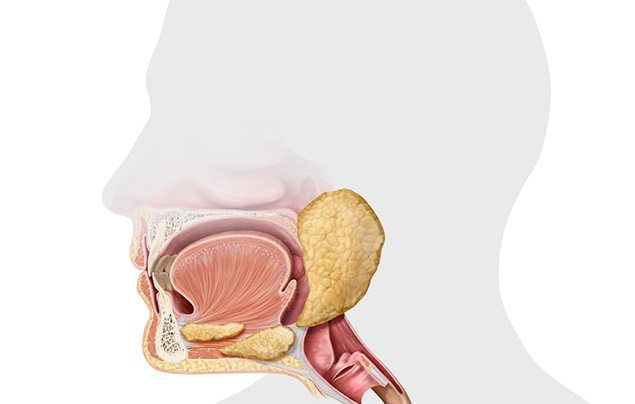
It all starts here! Up to 28 strong teeth* chomp your food, breaking it into smaller bits. Meanwhile, the tongue keeps moving the food around, shifting it to the type of teeth that will be best at munching it. It also squeezes the chewed grub into swallowable lumps, pushing them back towards the throat. Gulp!
Fast fact: When you swallow, a little flap of cartilage called the epiglottis closes off the windpipe so food doesn’t go down there by mistake.
Here, you’ll also find the salivary glands that produce most of the slimy liquid in your mouth. This saliva moistens food, making it easier to swallow. It’s also full of chemicals called enzymes that help to break down food. Amazingly, just the smell of good grub can make your mouth start to water!
Fast fact: Your salivary glands can produce up to six cups of saliva per day. Squelch!
*MOST GROWN-UPS HAVE 32 TEETH. YOU USUALLY GROW FOUR ‘WISDOM’ TEETH BETWEEN THE AGES OF 17 AND 24.
Oesophagus
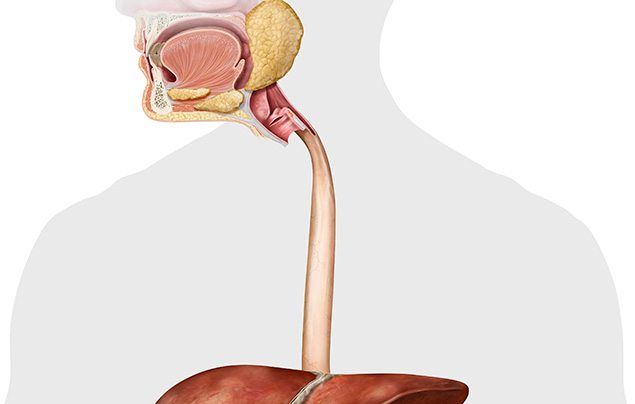
Also known as the gullet, this 25cm-long tube contracts to shift chewed food down to your stomach. The squeezing motion of the muscles is called peristalsis and it occurs throughout the digestive system. A slimy mucus is also oozed from the oesophagus to help the food on its way. Easy does it!
Fast fact: Thanks to peristalsis, food would get to your stomach even if you were standing on your head!
Stomach
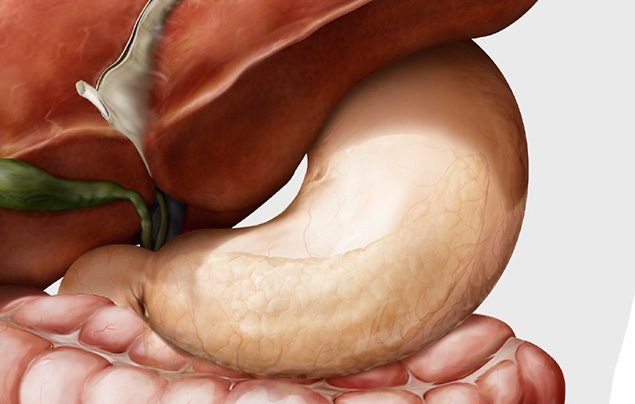
Next stop on our journey through the human digestive system — the stomach! This stretchy muscular bag is about the size of a tennis ball when it’s empty, but expands to the size of a football to store a massive meal. As soon as food plops inside, the stomach lining releases digestive juices and acid that break down the food even more, killing harmful bacteria. Muscles slosh and squelch the food together with the juices until it becomes a sloppy soup called chyme that’s ready to be squirted into the small intestine…
Fast fact: The acid in your stomach is so strong it could dissolve an iron nail!* To stop your stomach digesting itself, it’s lined with a protective mucus, and your stomach cells are replaced every few days.
* Please do not eat a nail. Ever.
Intestines
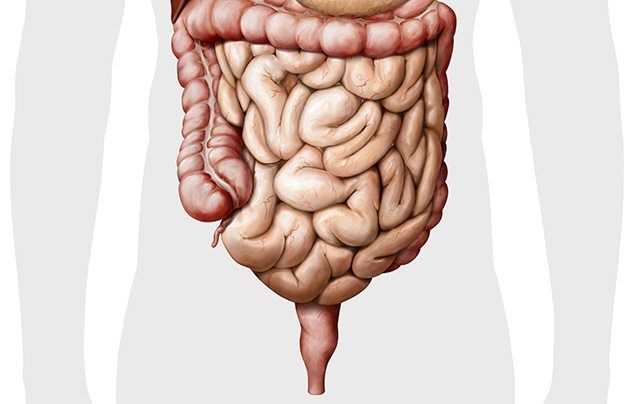
Despite the name, the small intestine is really not that small — it’s a whopping 6.5 metres long! It’s in this 3cm-wide tube that all the nutrients in your mushed-up food pass through the small-intestine lining and into the blood. Once all the goodness is gone, the sloppy mixture passes to the next part of the intestines…
Fast fact: The lining of the small intestine is covered with teeny finger-like bumps called “villi”. They give the lining a large surface area to help with absorbing nutrients.
More than twice as wide as the small intestine, but only 1.5 metres long, the large intestine’s job is to soak up water, salts and minerals from the indigestible leftovers. Finally, the remaining semi-solid waste, called faeces, travels to the lower colon and rectum for storage. When you go to the loo, a ring of muscle called the anus relaxes to allow the poo out! Super and stinky!
Fast fact: Your small and large intestines together are known as your bowels!
Liver
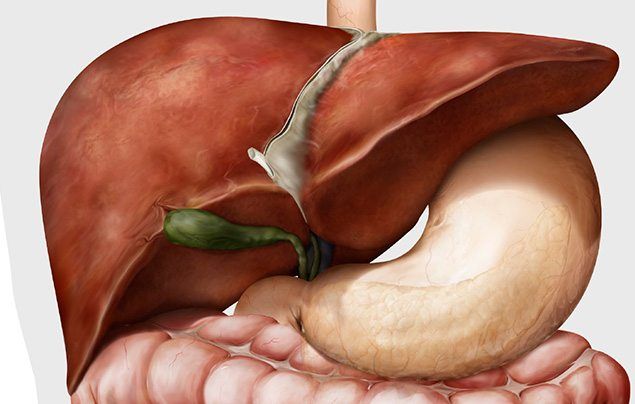
This busy brown organ plays an important role in the human digestive system — it’s your largest internal organ and has about 500 different jobs! It’s like a chemical processing factory — blood carries nutrients there from the small intestine, then the liver decides what to do with them. It also gets rid of toxins (substances that can be harmful to the body), recycles old blood cells, makes bile and other digestive juices, and produces, stores and releases glucose (to give you energy).
Fast fact: About one third of the body’s blood flows through the liver every minute!
Gallbladder
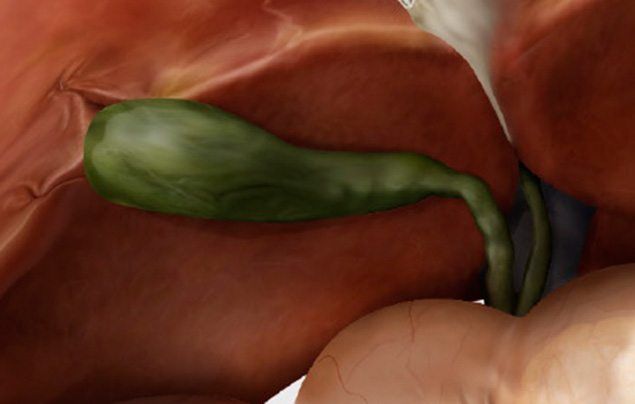
The role of this green, pear-shaped organ is to store bile (a liquid that aids digestion) and make it thicker and stronger before adding it to the small intestine.
Did you know that we have FREE downloadable Human Digestive System Primary Resource? Great for teachers, homeschoolers and parents alike!
Pancreas
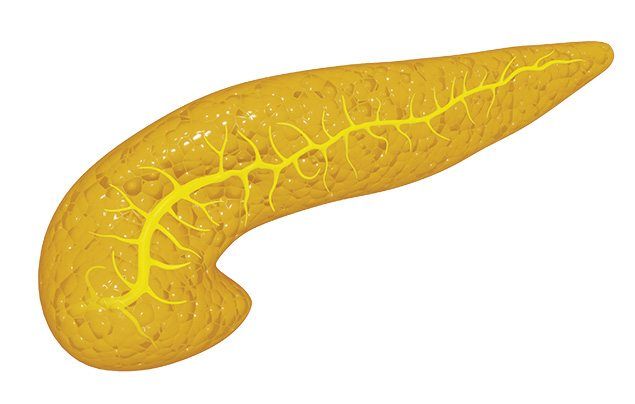
Your pancreas sits just behind the stomach and makes chemicals called enzymes which help digest nutrients in your food. It also makes insulin, a hormone which helps control your blood sugar levels.
Appendix
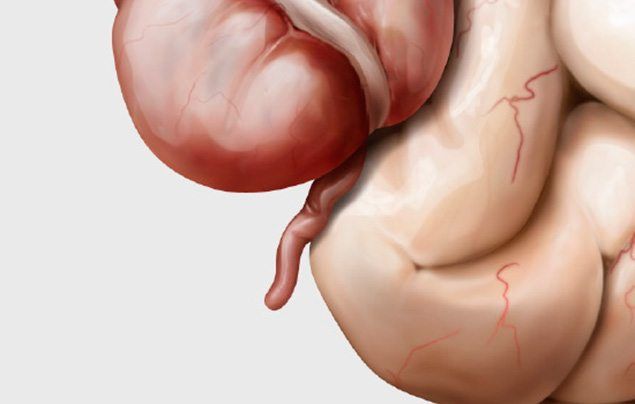
Doctors used to think that this thin little organ was useless — a leftover body part from early humans. But today it’s thought that the appendix stores “good bacteria” that can help your digestive system work again after you’ve been poorly.
What did you think of our journey through the human digestive system? Leave a comment below and let us know…
Pancreas image: DK / Superhuman Encyclopedia. All other images: Getty Images UK.
With thanks to Dr Dewi Byrne.
More Like General Science

Your Amazing Brain!

Female wildlife rangers!
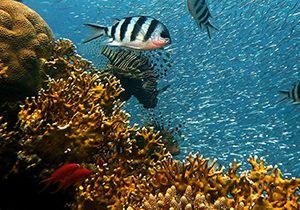
Coral reef facts
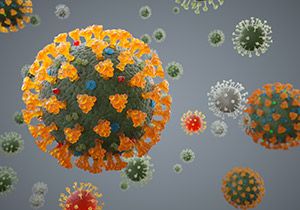








LEAVE A COMMENT
THANK YOU
Your comment will be checked and approved shortly.
WELL DONE,
YOUR COMMENT
HAS BEEN ADDED!
COMMENTS
cool
cool
this is awsome
:)
Cool but super gross :)
WOW!
It is gross but cool and funny.
The digestive system is so magnificent. And I love how you described alot about it. And Evan added in some fun fact. If you were in high school or elementary I would have moved you up about 8 grades. Well done
I loved this
awesome facts and nice content
Thanks
Cool
Cool!
Cool
NOICE
cool
wow
Cool!
[…] a virus pandemic, the best defense out there is to take care of your gut, brain, and immunity! Your digestive system is the man on the job - it is compromised of ten organs, contains 20+ specialized cells, and is one […]
[…] National Geographic Kids […]
[…] National Geographic Kids […]
Clear, concise and easily absorbed notes. Thank you.
Really Interesting to read!
that's gonna help me ace my test
Cool
very werd
Gross but awsome
I think so too
THIS IS SCARY!!! By the way, i'm a kid who had a really weird dream about seeing the Egyptians taking peoples guts out! like ewwwwwwww but the strange thing is I saw everyone getting their guts taken out!!!! So if you read this then please help me! I want to get rid of this dream!! Its been 3 days now and I still have the exact dream about peoples guts taken out like WHAT THE HELL! this dream is really scaring me!
THIS IS AMAZING
WOW what amazing interesting information
Nice
some of this
thx
Wow,I got so many things about digestive system .thanks
The Journey is amazing.! If we eat something, the process of the digestion starts at that time...?
amazed
LOL
Wow
Your comment : its so educating and now l know better what my inside is like concerning digestive system. And the importance of each and every apart inside. l can give the knowledge to the young ones for a health lesson and how to care for your body and what to take in as food.
Really STRANGE FACTS
That is so cool.
Wow
Awesome and wow!!!!!
Very interesting! We learned a lot of new things.
so cool
Super!
Awesome!
It's cool!
blahblahblahblahblahblahblahblahblahblahblahblahblahblahblahblahblahblahblahblahblahblahblahblahblahblah
Wow that's the one
cool
Very interesting and learnt good facts that I will now remember.
wow!
cool
the liver does soooo many jobs imagine what would happen without it. '0'
Cool
That is the weirdest thing
The Liver was the most interesting. Some of the pictures looked a bit weird but I got used to it.
lol
WOW! I never knew that. I thought that it was just your stomach digestive. I learned a lot from this.
Disgusting
Ewwwww
sick
Why is this super heathy?
ok
Can you teach about the nervous system?
COOL!
wow!
can you teach about what is inside your bones?
Looks good
CUSTOMIZE YOUR AVATAR